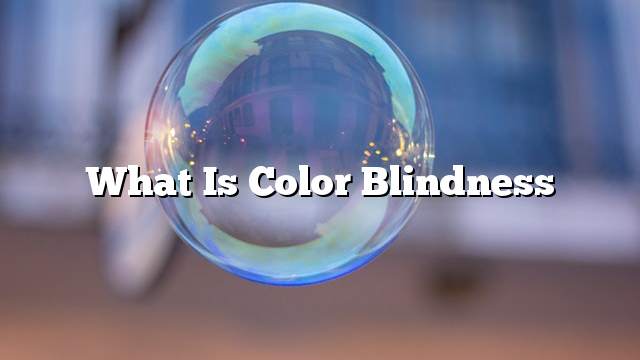Color blindness is a disease of the human being that makes it impossible to distinguish between certain colors or colors because of an abnormality in the eye, specifically in the retina, a defect in the optic nerve, or a defect in the visual cells in the brain. The first to write about the disease of color blindness is the English scientist John Dalton, where he published a topic explaining the color blindness, and the strange that this world was infected with this disease.
The percentage of people infected with this disease varies from region to region, with a significant proportion of those infected. For example, in Australia, the proportion of males infected with the disease is 8 percent, and the proportion of females is 0.4 percent. There are many reasons for this disease, including the genetic cause, where the disease is transmitted from parents to children, which is the most common cause. There are also three types of cones, red, green and blue, each containing a dye that represents the color, and the conical cells absorb the light falling on the retina, turning it into a signal reaching the brain, and interpreted by Brain to what we see of colors.
There are types of color blindness, there is a color blindness, in which the patient sees the world in black and white only. There is a double color blindness, in which the patient is unable to distinguish between two colors, such as the distinction between the yellow and orange colors, or the distinction between the red and green colors. The symptoms of this disease are the patient’s vision of a wide spectrum of colors, which is different from what other people see, and is believed to be seen as others. Also, the number of colors he sees is small for ordinary people, or he sees black, white, and gray colors only, and they come in very rare cases.
The Ichihar color test is used to diagnose color blindness, and is used extensively in this. This test identifies a group of numbers and letters, which are present within a group of colored spots. There is no specific treatment for color blindness, but color contact lenses or glasses can be used to improve vision and color discrimination. In some cases, surgical intervention can solve part of the problem of color blindness. If the cause of the disease is taking a medicine, or because of a particular chemical, it can be treated by not taking the medicine, or by avoiding and avoiding these substances.
